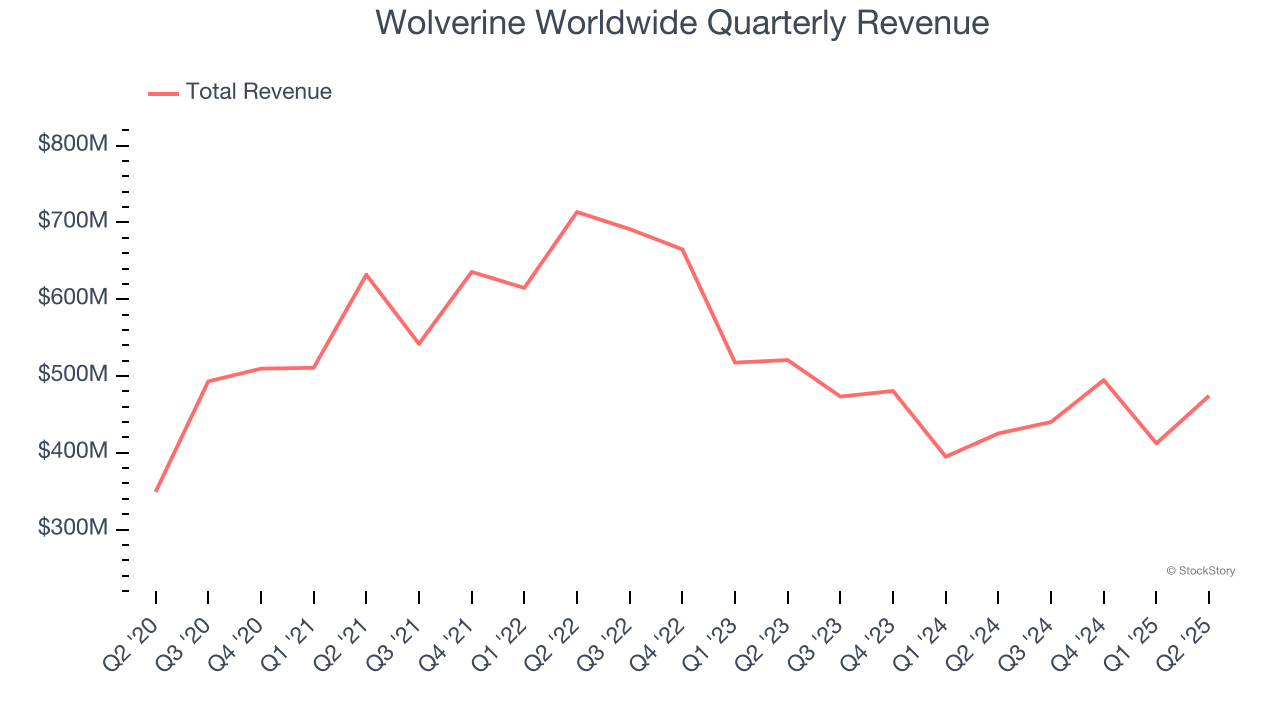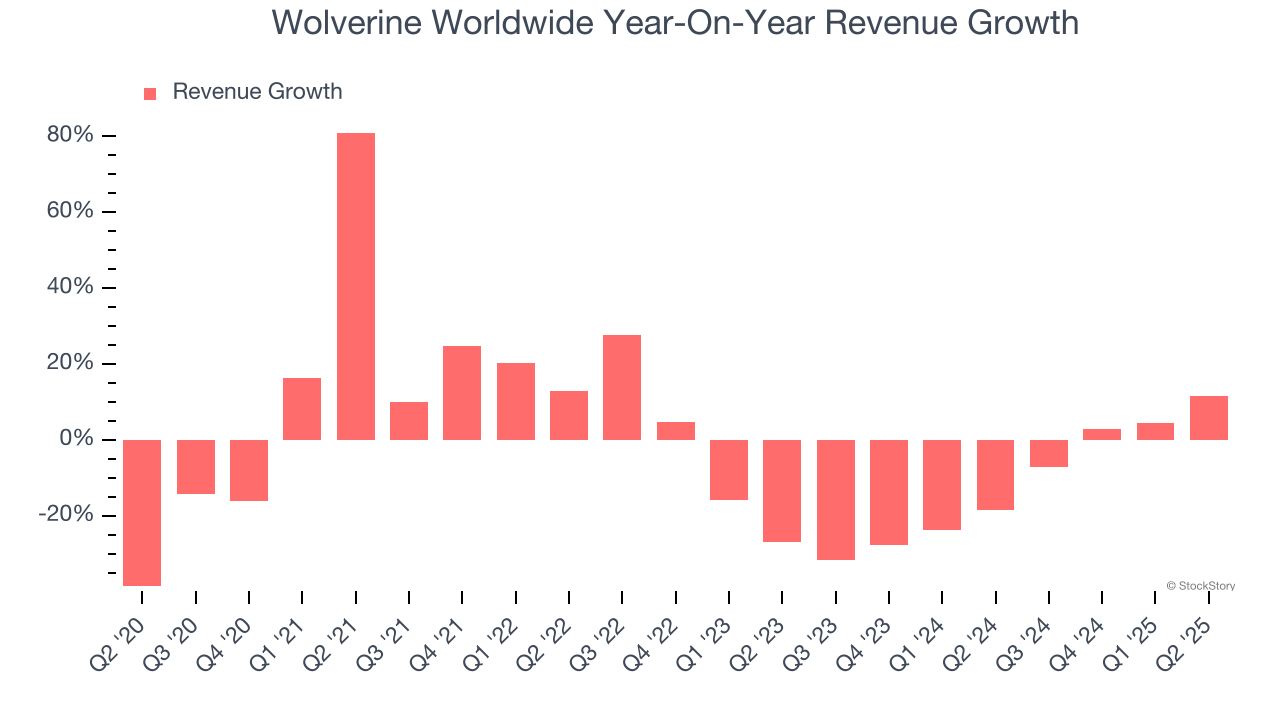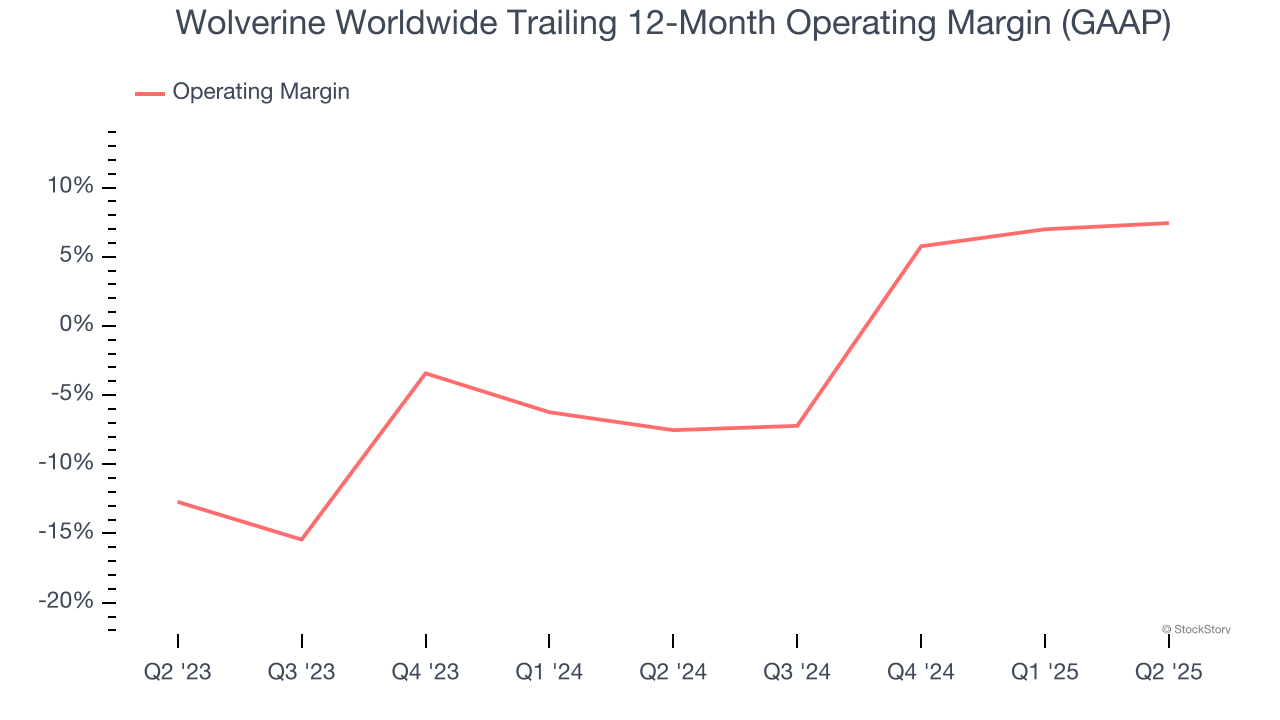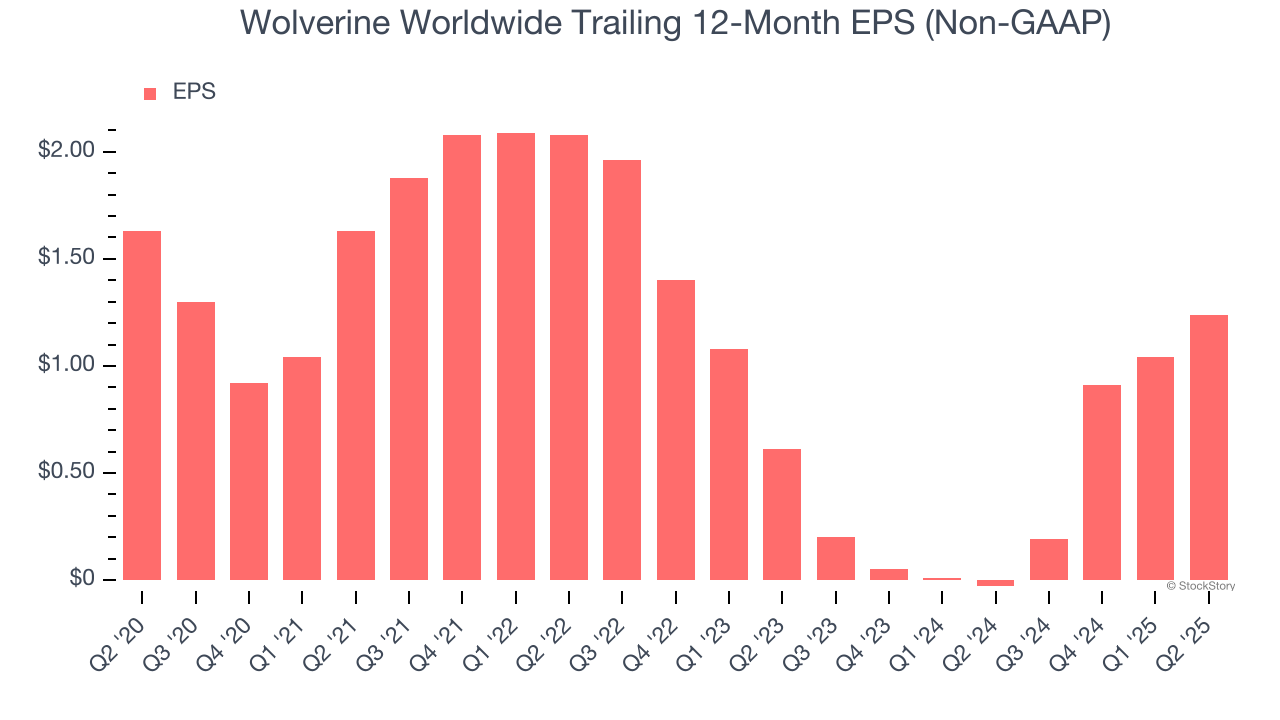
Footwear conglomerate Wolverine Worldwide (NYSE:WWW) beat Wall Street’s revenue expectations in Q2 CY2025, with sales up 11.5% year on year to $474.2 million. On the other hand, next quarter’s revenue guidance of $455 million was less impressive, coming in 1% below analysts’ estimates. Its non-GAAP profit of $0.35 per share was 44.4% above analysts’ consensus estimates.
Is now the time to buy Wolverine Worldwide? Find out by accessing our full research report, it’s free.
Wolverine Worldwide (WWW) Q2 CY2025 Highlights:
- Revenue: $474.2 million vs analyst estimates of $451.4 million (11.5% year-on-year growth, 5.1% beat)
- Adjusted EPS: $0.35 vs analyst estimates of $0.24 (44.4% beat)
- Adjusted EBITDA: $41.4 million vs analyst estimates of $38.88 million (8.7% margin, 6.5% beat)
- Revenue Guidance for Q3 CY2025 is $455 million at the midpoint, below analyst estimates of $459.5 million
- Adjusted EPS guidance for Q3 CY2025 is $0.30 at the midpoint, above analyst estimates of $0.29
- Operating Margin: 8.6%, up from 6.8% in the same quarter last year
- Free Cash Flow Margin: 8.7%, up from 5.6% in the same quarter last year
- Market Capitalization: $1.90 billion
"Our second quarter results exceeded our expectations, which led to the strongest revenue growth we've seen in several years. This growth, coupled with another quarter of record gross margin, helped more than double our earnings per share year-over-year," said Chris Hufnagel, President and Chief Executive Officer of Wolverine Worldwide.
Company Overview
Founded in 1883, Wolverine Worldwide (NYSE:WWW) is a global footwear company with a diverse portfolio of brands including Merrell, Hush Puppies, and Saucony.
Revenue Growth
A company’s long-term sales performance can indicate its overall quality. Even a bad business can shine for one or two quarters, but a top-tier one grows for years. Wolverine Worldwide struggled to consistently generate demand over the last five years as its sales dropped at a 1.6% annual rate. This was below our standards and is a sign of poor business quality.

Long-term growth is the most important, but within consumer discretionary, product cycles are short and revenue can be hit-driven due to rapidly changing trends and consumer preferences. Wolverine Worldwide’s recent performance shows its demand remained suppressed as its revenue has declined by 12.8% annually over the last two years. 
This quarter, Wolverine Worldwide reported year-on-year revenue growth of 11.5%, and its $474.2 million of revenue exceeded Wall Street’s estimates by 5.1%. Company management is currently guiding for a 3.4% year-on-year increase in sales next quarter.
Looking further ahead, sell-side analysts expect revenue to grow 3.5% over the next 12 months. While this projection suggests its newer products and services will fuel better top-line performance, it is still below average for the sector.
Today’s young investors won’t have read the timeless lessons in Gorilla Game: Picking Winners In High Technology because it was written more than 20 years ago when Microsoft and Apple were first establishing their supremacy. But if we apply the same principles, then enterprise software stocks leveraging their own generative AI capabilities may well be the Gorillas of the future. So, in that spirit, we are excited to present our Special Free Report on a profitable, fast-growing enterprise software stock that is already riding the automation wave and looking to catch the generative AI next.
Operating Margin
Operating margin is an important measure of profitability as it shows the portion of revenue left after accounting for all core expenses – everything from the cost of goods sold to advertising and wages. It’s also useful for comparing profitability across companies with different levels of debt and tax rates because it excludes interest and taxes.
Wolverine Worldwide’s operating margin has risen over the last 12 months, leading to break even profits over the last two years. However, its large expense base and inefficient cost structure mean it still sports inadequate profitability for a consumer discretionary business.

This quarter, Wolverine Worldwide generated an operating margin profit margin of 8.6%, up 1.7 percentage points year on year. This increase was a welcome development and shows it was more efficient.
Earnings Per Share
Revenue trends explain a company’s historical growth, but the long-term change in earnings per share (EPS) points to the profitability of that growth – for example, a company could inflate its sales through excessive spending on advertising and promotions.
Sadly for Wolverine Worldwide, its EPS declined by 5.3% annually over the last five years, more than its revenue. However, its operating margin actually improved during this time, telling us that non-fundamental factors such as interest expenses and taxes affected its ultimate earnings.

In Q2, Wolverine Worldwide reported adjusted EPS at $0.35, up from $0.15 in the same quarter last year. This print easily cleared analysts’ estimates, and shareholders should be content with the results. Over the next 12 months, Wall Street expects Wolverine Worldwide’s full-year EPS of $1.24 to grow 1.7%.
Key Takeaways from Wolverine Worldwide’s Q2 Results
We were impressed by how significantly Wolverine Worldwide blew past analysts’ EPS expectations this quarter. We were also glad its EPS guidance for next quarter exceeded Wall Street’s estimates. Overall, we think this was a decent quarter with some key metrics above expectations. The stock traded up 4.2% to $24.50 immediately after reporting.
Wolverine Worldwide put up rock-solid earnings, but one quarter doesn’t necessarily make the stock a buy. Let’s see if this is a good investment. What happened in the latest quarter matters, but not as much as longer-term business quality and valuation, when deciding whether to invest in this stock. We cover that in our actionable full research report which you can read here, it’s free.
